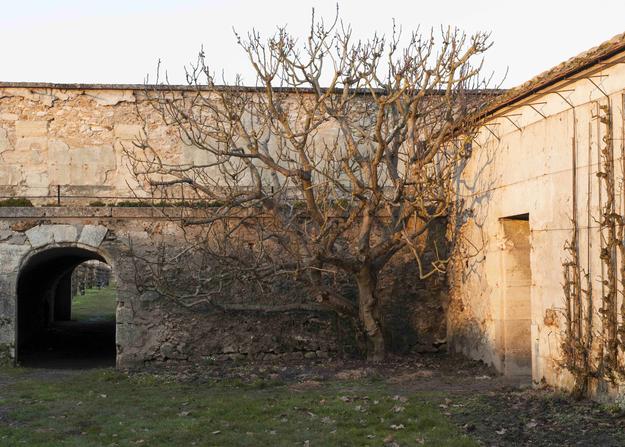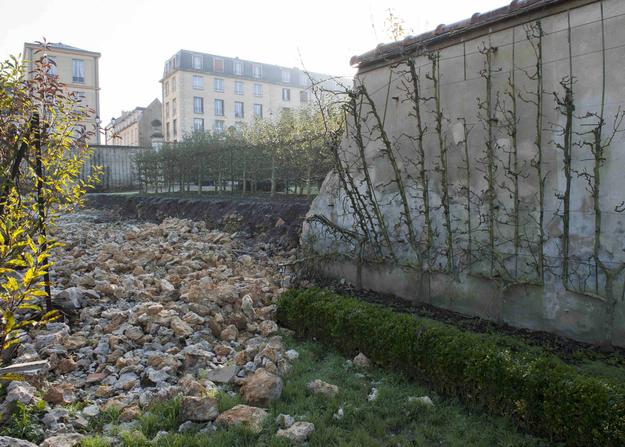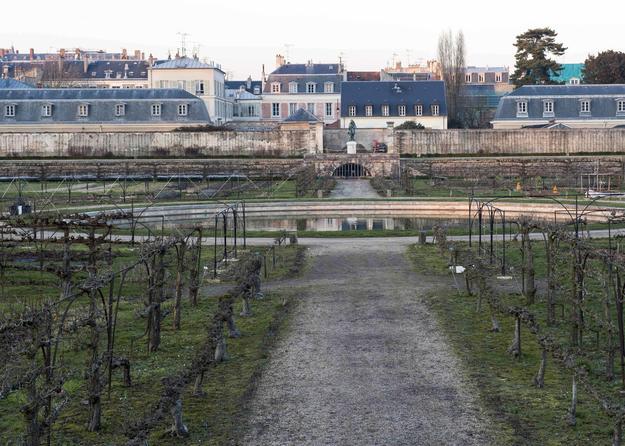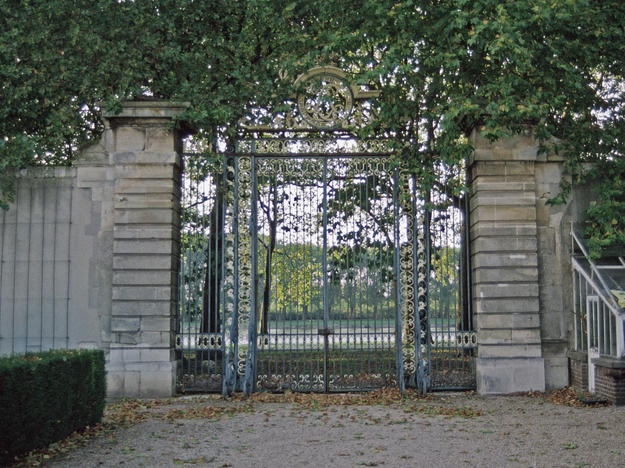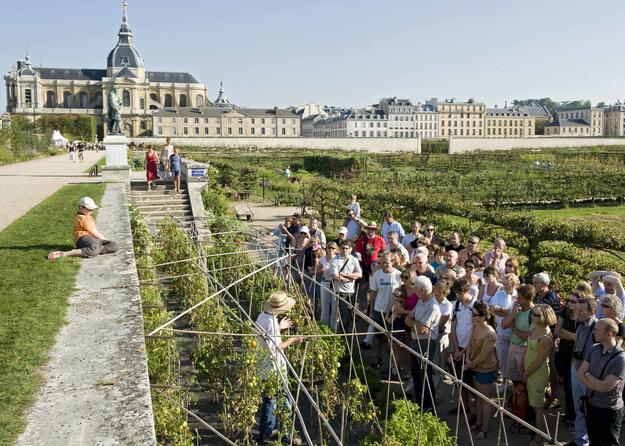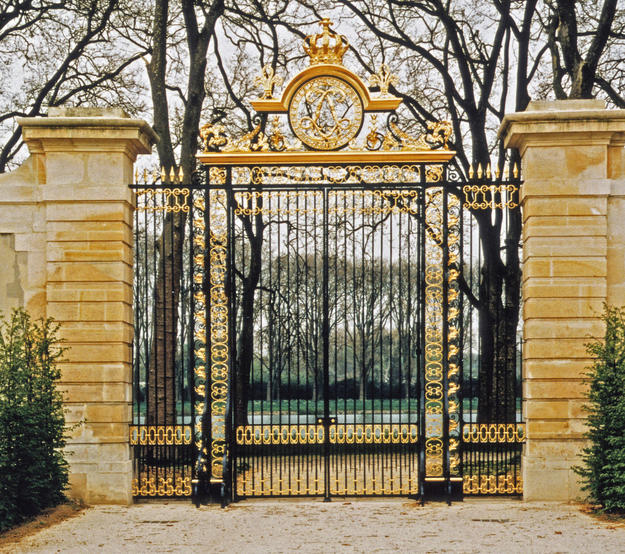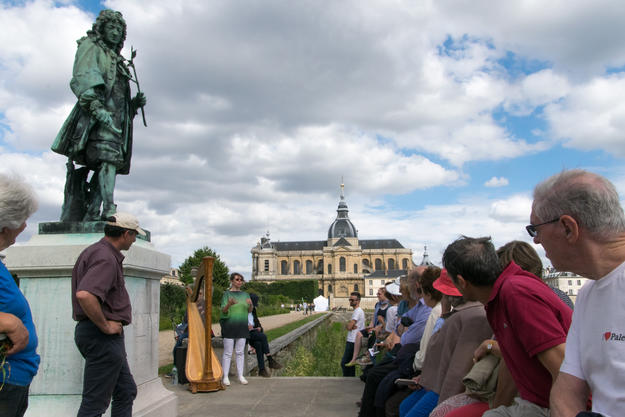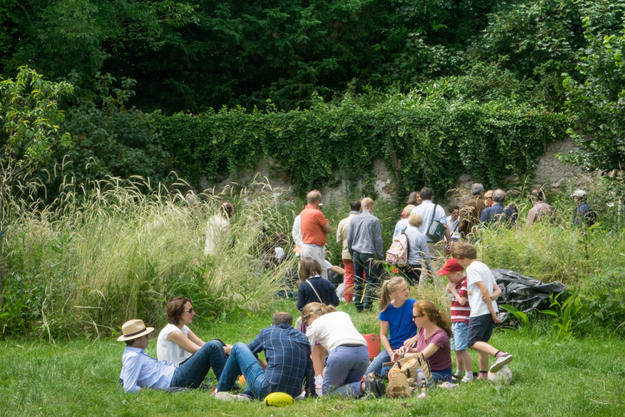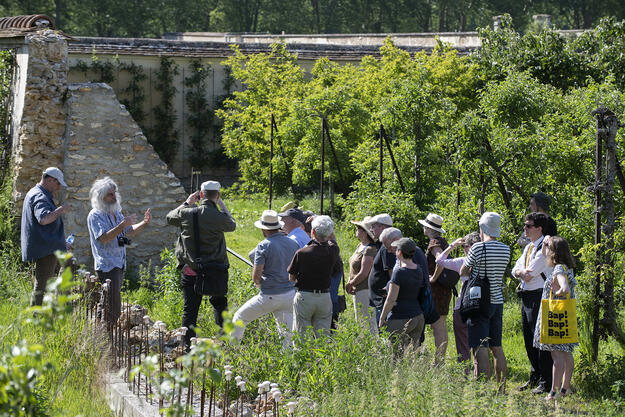Potager Du Roi
Site History and Significance
From Farm to Table to Education
Potager du Roi, the kitchen garden of the Palace of Versailles, has had a long history as a place of horticultural instruction and innovation. The garden was created by Jean-Baptiste de La Quintinie (1626-88), an expert gardener and agronomist, and French architect Jules Hardouin-Mansart (1646-1708) during 1678-99, to fulfil King Louis XIV’s vision of creating the most impressive palace in the world. The Potager is just over 23 acres with 28 small gardens on the periphery and a Grand Carré, made up of 16 square vegetable gardens surrounding a central fountain.
For over 300 years, the Potager du Roi has been cultivated, introducing new microclimates and methods for producing fruits and vegetables in and out of season. Additionally, it maintains a tradition of education. In the early 1990s, through support from Rachel Lambert Mellon, WMF engaged in conservation of the garden, including completion of condition surveys, creation of a conservation plan, and the restoration of the finely detailed Grille du Roi—the king’s private entrance to the Potager—and the central Grand Carré fountain. Since 1995, the garden has housed and has been under the stewardship of the École Nationale Supérieure de Paysage (French National Landscape Architecture School). There are over 450 varieties of fruit trees and, depending on the year, between 300 and 450 vegetable varieties are cultivated. Every year approximately 40 tons of fruits and vegetables are produced, a labor-intensive process of planting, pruning, and harvesting that is carried out by a small group of people and with limited resources.
2018 World Monuments Watch
Despite being open to the public daily, the gardens cannot be visited under the same ticket as the palace and the rest of the gardens since Potager du Roi is not under the management of the Palace of Versailles. A process of identifying and engaging stakeholders to plan for the future of the site is currently underway and aims to address a number of challenges, including damaged and outdated drainage systems, greenhouses, supporting structures, and amenities for visitors. The need to select and cultivate species that can grow without pesticides and are adaptable to climate change means that approximately 40% of existing fruit trees (already in poor condition) need to be replaced. Inclusion of Potager du Roi on the 2018 World Monuments Watch helped mobilize local and international stakeholders to embrace and become part of a new vision for the site.
Our Involvement
2018 Watch Day
In June 2018, a two-day Watch Day at Potager du Roi gathered close to 3,000 participants of all ages who enjoyed a series of activities including guided tours and workshops with the gardeners, readings, tastings, and theater and musical performances. Approximately one third of the participants were visiting the site for the first time. The public open house was a celebration of the historic gardens, its stewards, and the many partner organizations who supported the event. A second, two-day, Watch Day was held in June 2019, sponsored by American Express, welcoming visitors again with the chance to experience the site.
Current Restoration Works
WMF is currently supporting the restoration of the historic forge building, which since it ceased playing host to a blacksmith’s workshop has remained unoccupied. It will be refurbished in order to welcome visitors to the heart of the Potager.
Key funding supports conservation
In June 2018, American Express announced $1 million total in funding to support preservation efforts at eight 2018 Watch sites, including the Potager du Roi. In February 2019, the Robert W. Wilson Charitable Trust announced $2 million total in funding to support preservation efforts at five WMF projects, including the historic kitchen garden. With this generous support, WMF is collaborating with the École Nationale Superieure de Paysage (ENSP) to implement conservation, educational, and community engagement activities to help revitalize the site. Restoration will focus on the southern wall of the Jardin du Breuil, where plum trees grew at the time of Louis XIV. The walls provide shelter from the wind and are integral to the art of espalier—training and pruning a fruit tree to grow flat against a masonry wall.
In addition to conservation work, ENSP will develop a series of educational materials to be used as part of their existing programs for local school groups: for the youngest students, focusing on the senses of touch, taste, and smell; for elementary school students, focusing on the different stages of the cultivation of plants; and for middle school students, emphasizing the ecological aspects of agriculture.
Learn More
World Monuments Fund safeguards cultural heritage around the globe, ensuring our treasured places are preserved for present and future generations.
Sign up for our newsletter to receive regular updates on our projects, stories from the field, upcoming events, and more!
World Monuments Fund's work at Potager du Roi has been made possible, in part, by support from The Gerard B. Lambert Foundation, The Robert W. Wilson Charitable Trust, American Express, and Tianaderrah Foundation / Nellie and Robert Gipson.

